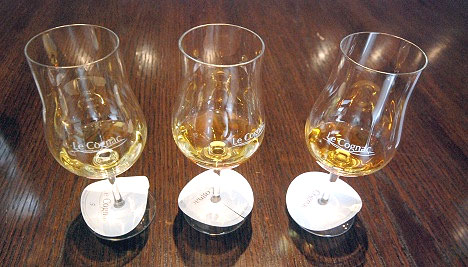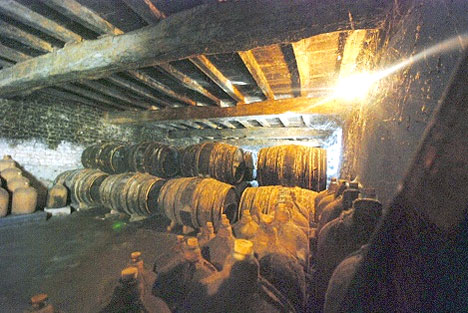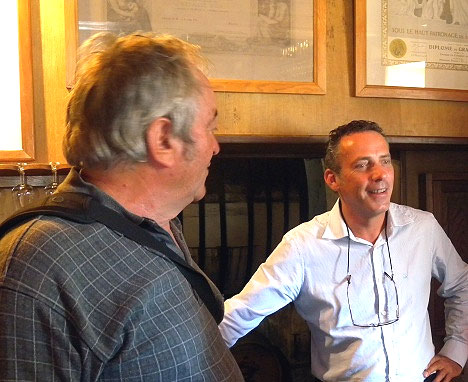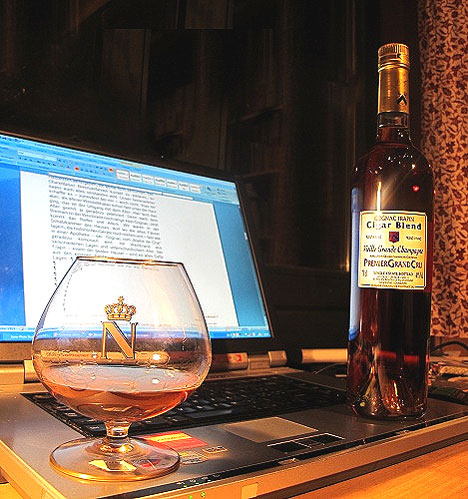"Cognac" she calls again and again, the duck in love "Chantal" of the ventriloquist Pierre Ruby. "For me, the small French town of Cognac, 100 kilometres north of Bordeaux, is inseparably linked to Chantal's charmingly bleeping voice, just like its world-famous high-proof drink: "Cognac", repeatedly called out, "Cognac"! Years ago, I was already in the small provincial town, attracted by the sounding name. Far more than the world-famous drink, I was interested in the castle where the knight-king Francis I was born, who defeated the Confederates at the Battle of Marignano in 1515 and became Charles V's opponent in the struggle for the imperial dignity.
 |
| Cognac - French provincial town% where King François I was born. |
So now - after many years - I return to Cognac, the wine town where they hardly make wine, but brandy. I won't visit the château this time - I don't have the time. Princes and kings have been driven out of it for centuries. Since the French Revolution, the château has only housed wine barrels. In fact, today, brandy reigns supreme in this region along the Charente. "Every second, 4 bottles of cognac are sold worldwide," proclaims the advertisements. To this, I reflect, I contribute next to nothing. I have to reckon with years rather than seconds. Nevertheless, I have now approached cognac and spent almost two hours in "school": grape varieties, vinification, growing zones, distilling process and even the art of tasting.
 |
| "When the mind opens" - a school lesson with cognac. |
After this basic cognac education, we - cognac pilgrims - visit the traditional Frapin house. First question at the winery: "What is cognac?" I shake my head, lower my eyes, grab my forehead. Haven't I been paying attention? The answer is simple and - to my mind - not entirely correct. The representative of the old family business, which has owned its own vineyards in the heart of the "Grand Champagne" since the 13th century and has been producing brandy - Cognac - for 20 generations, means "wine". The basic product - as far as is undisputed - is really wine, white wine, mainly from the old grape variety Trebbiano, which here, however, is called "Ugni blanc". This wine would probably not please a wine lover, as it has a high acidity and a weak alcohol content. Ideal not for drinking, but for distilling. This takes place during the winter months and must always - according to the regulations - be completed by the end of March.
 |
| Cognac tasting: high-proof concentrate - just sniff it with your nose. |
Don't worry: I'm not going to pass on my new half-knowledge and knowledge now; I'm not going to try to explain the Charentais distilling process correctly so that everything is also understood. Our seminar leader doesn't manage it either - at least not with me. But what almost gets under my skin, as an older wine lover, is the way age is treated. Here, age is honoured, even celebrated. Because after distilling, the brandy is far from being a cognac. Now comes the maturing and ageing. We visit the treasure chamber of the house, where the old barrels are stored, the historical equipment stands and - almost like in a pharmacy - the cognac is virtually composed by the "Maitre de Chai", with brandy from different sites and different vintages. At Frapin - one of the best houses - it is only juices from their own vineyards and exclusively from Grand Cru sites.
 |
| In the deep cellar% where the cognac is allowed to age. |
On to the tasting! Cognacs that are at least six years old are actually called "Napoléon", but today they are usually called X.O.. From 6 years on, the cognac starts to become more and more precious, year after year. The oldest ones that can still be found in the producers' treasure troves today date back to the 18th century. From these, the best cognacs are blended today: from the contents of old or ancient barrels. Their price: 1000 euros and upwards, we are told. As with old Bordeaux, there is also a "luxury class" in Cognac. Whereby the danger of being already "degraded" - in contrast to wine - can hardly occur here. I am inspired by the honour given to age here. Of course, we try a much younger age. The luxury class is left to the imagination.
 |
| Cellar master of Frapin (right) with the author of the column. |
My first attempt at tasting actually ends with the nose. Yes, the nose, it takes the sceptre. Don't sniff too long in the glass, rather keep your distance, otherwise your mucous membranes will be attacked before the aromas can become a pleasure. Still, it's getting really difficult now, the vocabulary is no different from wine: soft, harmonious, vanilla notes, apricots, oranges, coffee, undergrowth, leather.... I am desperately turning my inner aroma wheel. Actually, I have no desire to sip and certainly not to drink. I just sink into the sea of scents and flavours.
 |
| While writing this column |
You can't spit anyway, the drops are too precious. A new, diverse world of aromas opens up. The 40 percent alcohol by volume washes everything away too quickly - at least that's how I feel. But wonder of wonders: it doesn't burn my throat, but I can still feel the effect. After the four samples - from the youngest cognac slightly over 6 years old to the oldest, about 38 years old, I actually have enough as a first experience. But then: something that happens quite rarely (I'm not so easily seduced any more): I buy a bottle at the winery with the sounding name "Cigar Blend, Vieille Grande Champagne, Premier Grand Cru, of course not of biblical age, but already having spent a few years in the barrel, born of 300 years of tradition - age is really still honoured.
Sincerely
Yours sincerely
Peter (Züllig)